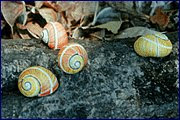Conservation of Varied Ecosystems
Well preserved ecosystems, variegated landscapes and a vast array of flora and fauna make Cuba an exceptional Caribbean destination for nature lovers.
Four per cent of the world’s land species live on the Cuban archipelago. It is home to some 6,700 species of higher plants (about half of which are native) as well as 14,000 species of invertebrates and 650 vertebrates—including 350 bird species. Among Cuba’s countless gems are the world’s smallest frog (Eleutherodactylus limbatus, only 12 millimetres long) and tiniest bird (Mellisuga helenae—the bee hummingbird, some 63 millimetres long).
 Roaming through the country, visitors will find lush tropical forests, where rare orchids grow; dry mountainous areas, where prehistoric cacti still live; everglades populated by mangrove,manatee and flamingoes; wetlands harbouring speciesimportant tobiotechnology;and hummocks that guard fossillized plants such as the cork palm(Microcycascalocoma).
Roaming through the country, visitors will find lush tropical forests, where rare orchids grow; dry mountainous areas, where prehistoric cacti still live; everglades populated by mangrove,manatee and flamingoes; wetlands harbouring speciesimportant tobiotechnology;and hummocks that guard fossillized plants such as the cork palm(Microcycascalocoma).
The country also boasts more than 100 nature trails and hiking paths.Main hiking routes arewell signed, and professional guides are available. Spelunking, bird-watching, nature photography and horseback riding are only a few of the activities awaiting nature lovers.
Ecotourism highlights: |
Guaniguanico Mountain Range: Noted for unusual rock formations surrounding the Viñales Valley, an agricultural heartland.
Sierra del Rosario (biosphere reserve): Houses Soroa-Las Terrazas and the Santo Tomás cave system.
Guanahacabibes Peninsula (biosphere reserve ): Protected areas include La Guabina and Mil Cumbres.
Zapata Peninsula Nature Park (biosphere reserve): Features Caleta Buena, Playa Girón and Playa Larga; Laguna del Tesoro and the Amerindian village of Guamá; and La Boca crocodile farm.
Guamuhaya Mountain Range: Home to Topes de Collantes Tourism Complex, El Nicho and Tunas, Zaza and Lebrige wild animal preserves.
Sierra de Cubitas: Stretches from El Paso de los Paredones to Hoyo de Bonet to Cayo Ballenatos—in Nuevitas Bay—and the protected area in the northern Camagüey keys.
Northern Holguín: Offers tours to scenic Guardalavaca-Estero Ciego and Pinares de Mayarí National Park.
Sierra Maestra: Famous for its historical hideouts, this area spans Desembarco del Granma National Park, Pico Turquino National Park, Santo Domingo-La Sierrita, Marea del Portillo (including Las Yaguas and Cilantro Rivers).
Baconao Park (biosphere reserve): Houses La Gran Piedra, ruins of the island’s first French coffee plantations.
Baracoa: The place where Christopher Columbus first set foot in Cuba remains relatively untouched by civilization. The area is marked by Alejandro de Humboldt National Park; Yunque de Baracoa; Toa, Miel and Yumurí Rivers; Maguana beach.





No hay comentarios:
Publicar un comentario